News
SpaceX plans to relaunch in November amidst ongoing investigation
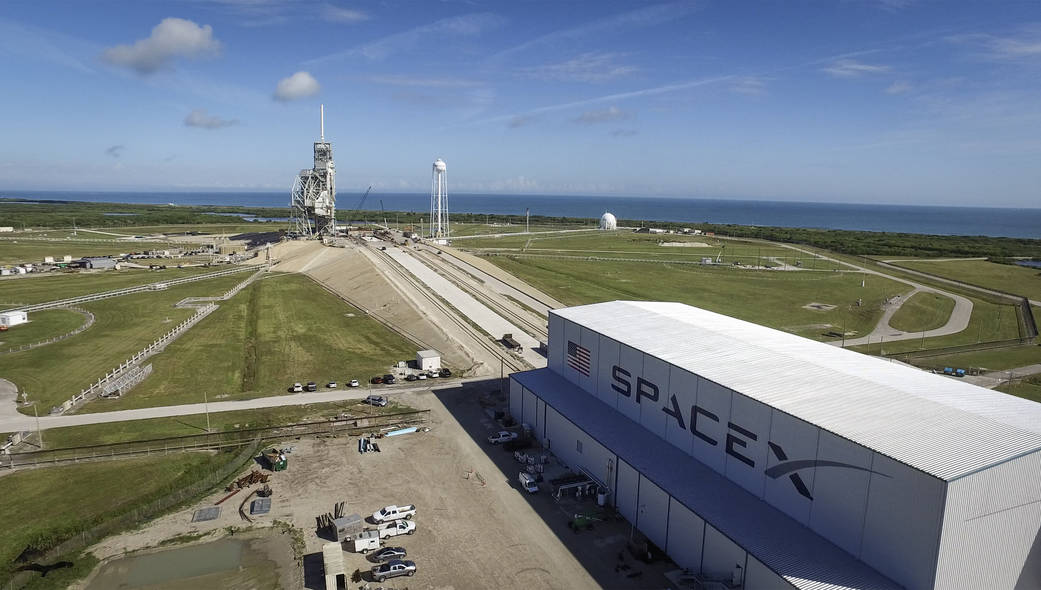
SpaceX President Gwynne Shotwell said Tuesday, while attending the World Satellite Business Week meeting in Paris, that the company anticipates being able to return to rocket flight as early as November. This marks the first time we’re hearing about relaunch plans from SpaceX following the September 1 explosion of its Falcon 9 rocket during a routine static fire test.
Shotwell confirmed that the company is still investigating reasons behind why the explosion took place and thus far have not determined a main cause of failure. “We are at an early stage of the investigation,” Shotwell told attendees of the Paris meeting. “The reason for the explosion is still unknown, but we know the rocket very well and know what we need to study.” As a result of the recent explosion and ongoing investigation, SpaceX will delay its plans to launch its Falcon Heavy rocket which was originally scheduled for later this year, to the first quarter of 2017. For those that may not be familiar with the Falcon Heavy rocket, SpaceX will utilize three Falcon 9 rockets strapped together – a total of twenty seven Merlin engines – to produce 4 million pounds of thrust. The Falcon Heavy will be capable of transporting a 116,845 pound payload into orbit making it the word’s most powerful rocket.
While repairs take place on a heavily damaged Launch Complex 40, site of the recent Falcon 9 explosion, the company looks to historic Launch Complex 39A as one of the options for its upcoming November flight. Built in 1965, Launch Pad 39A has has hosted launches from the famed Apollo and Space Shuttle Programs. Neil Armstrong, Buzz Aldrin and Michael Collins departed from there for the Moon on Apollo 11. SpaceX has since renovated Launch Pad 39A with the goal of adapting it to the needs of the company’s Falcon Heavy and Falcon 9 rocket. Shotwell said that the upcoming November flight could take place from either Launch Pad 39A or the Vandenberg Air Force Base in California, depending on the customer.
True to form with any Elon Musk-based company, returning to flight just three months after a major catastrophic failure, let alone one that is still pending investigation, speaks to SpaceX’s unrelenting mission to make spaceflight commercially viable. The company looks to build reusable rockets that can transport cargo into space and land itself back on earth. Being able to reuse rockets allows the company to increase its tempo on relaunches while drastically reducing costs by not having to rebuild rockets after each use.

News
Rivian teams up with Ben & Jerry’s on an electric ice cream truck
The age-old ice cream truck gets some new electric digs.
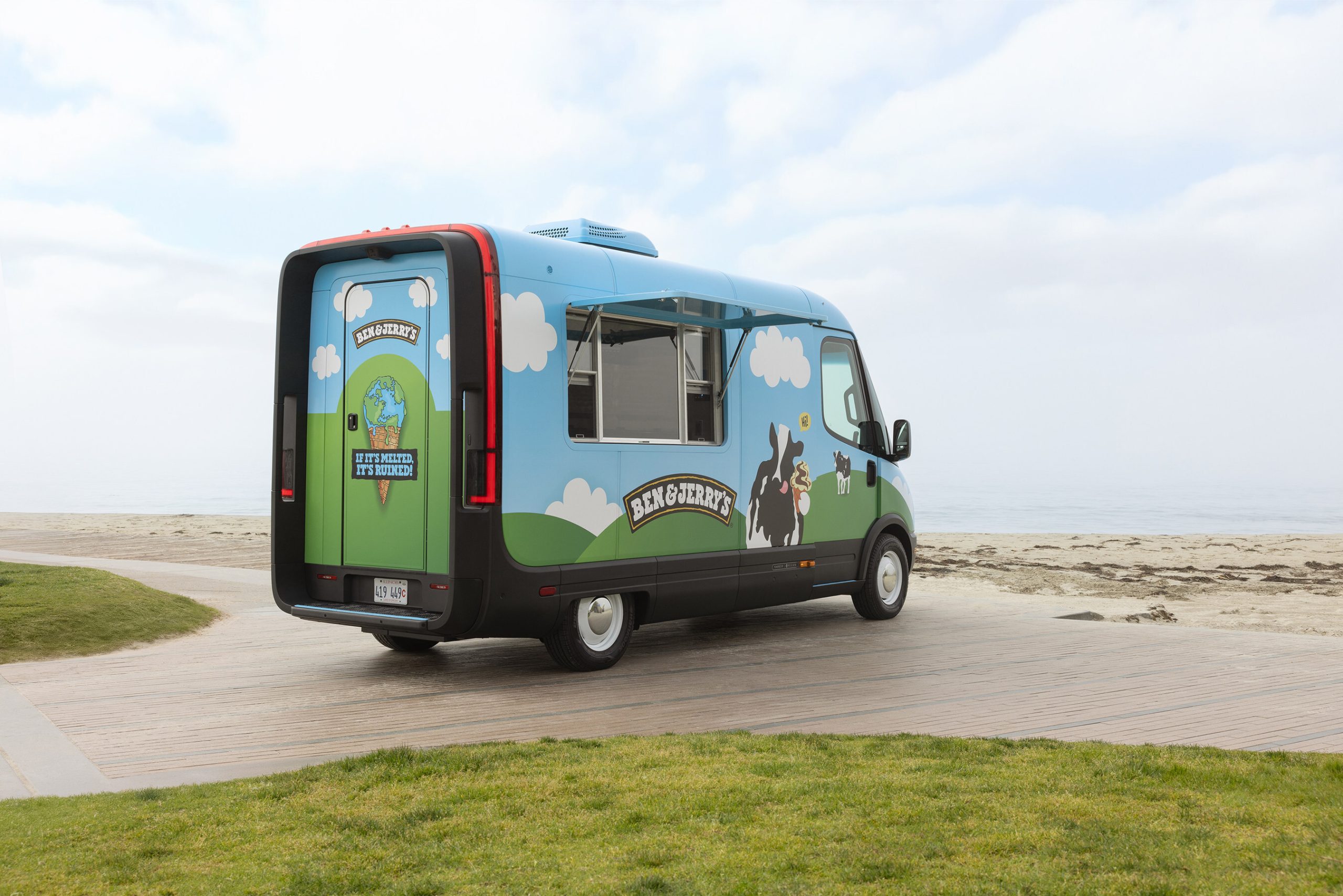
Rivian has officially teamed up with the ice cream company Ben & Jerry’s to launch an electrified ice cream truck, weeks after the electric vehicle (EV) maker launched its van to more commercial customers.
As detailed in a press release on Tuesday, Rivian and Ben & Jerry’s have unveiled two “Scoop Trucks,” a pair of electric ice cream trucks based on the Rivian Commercial Van (RCV). Rivian officially launched the RCV to commercial customers beyond its early partner Amazon last month, and the Scoop Truck is one of the first we’ve seen of its modular use cases in the weeks since.
The companies plan to debut the first of the electric ice cream trucks at the South by Southwest (SXSW) music festival in Austin, Texas, which starts on Friday. After the festival, both of the Scoop Trucks will be hitting the road across the U.S., along with joining a series of pop-up events in Vermont, where Ben & Jerry’s is headquartered.
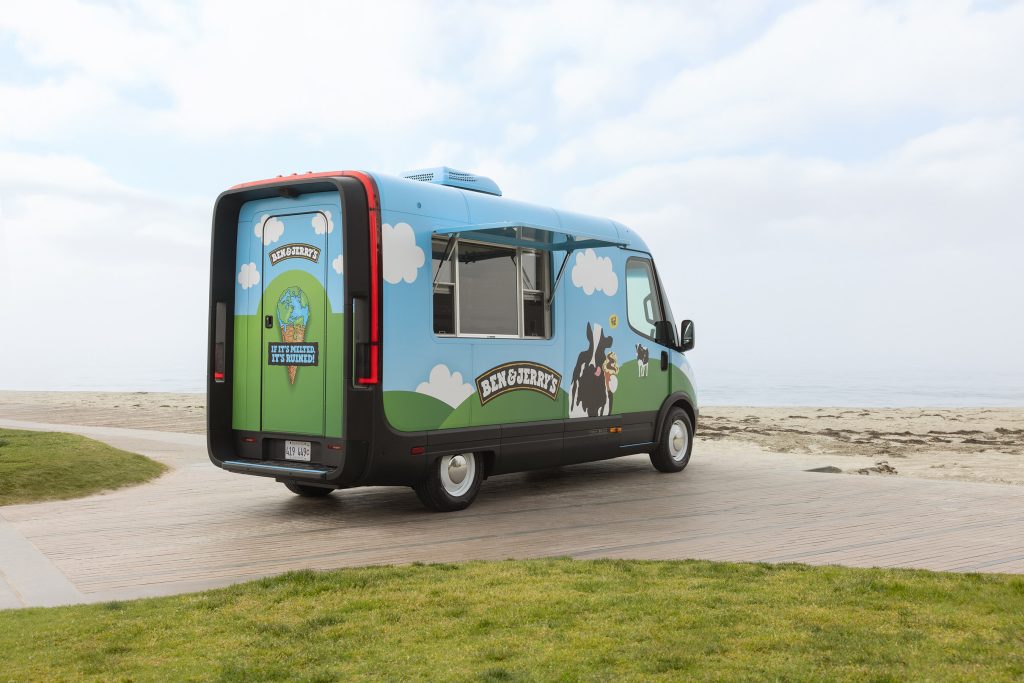
Credit: Ben & Jerry’s

Credit: Ben & Jerry’s
“Collaborating with the Ben & Jerry’s team to build the next generation of electric scoop trucks has been an incredible experience. It’s one of those projects that just makes the team smile,” said Brian Gase, Rivian’s Senior Director of Prototype Development. “We can’t wait for people to stop by for some ice cream and see it in action for the first time during SXSW!”
The Scoop Trucks appear to be the Rivian RCV 500, offering a 161-mile range, and an overall length of 248.5 inches. The electric van also includes a 100 kWh LFP battery pack, and Rivian says it can charge at speeds of up to 100 kW.
“Working with Rivian, an industry leader that is committed to sustainability is an ice cream dream come true,” notes Sean Slattery, Ben & Jerry’s U.S. Integrated Marketing project lead. “Today, Rivian helped Ben & Jerry’s reduce our reliance on fossil fuels in a small way, while making things a little bit cooler… which, as an ice cream company, is extremely difficult to do.”
A photo of one of the Rivian Scoop Trucks was also spotted and photographed being hauled in Irvine, California, as was shared on Reddit last week. As one viewer points out, the RCVs include an extra air conditioning unit on top of the van, in order to help keep necessary refrigeration running.

Credit: riceengineer | Reddit
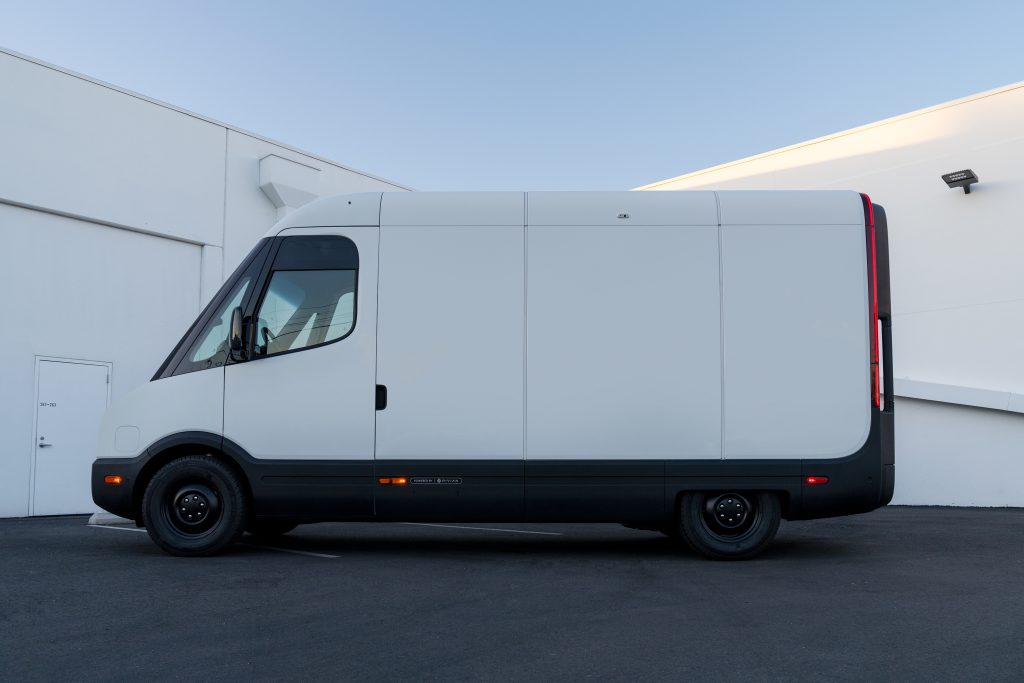
Credit: Rivian
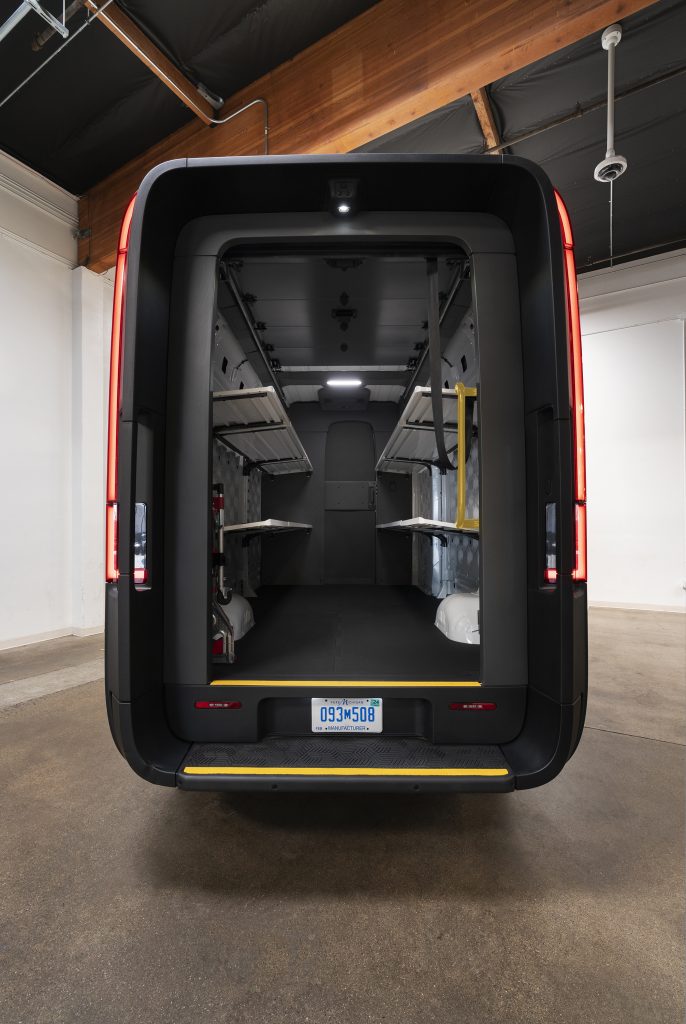
Credit: Rivian
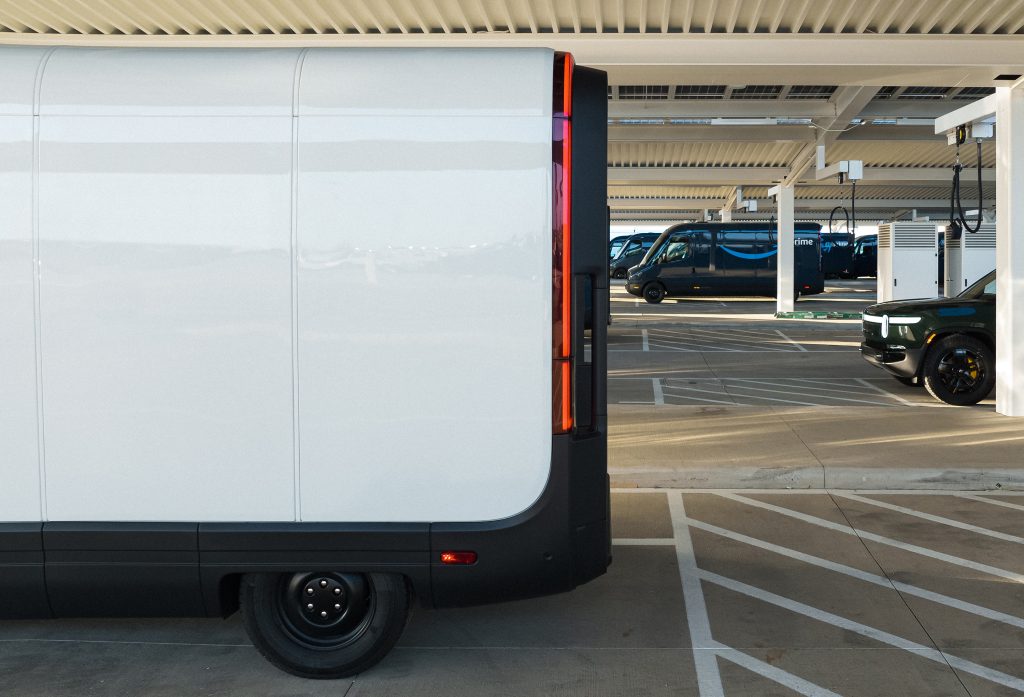
Credit: Rivian
READ MORE ABOUT RIVIAN: Rivian releases its Q4 and full-year 2024 financial results
Along with the Ben & Jerry’s RCV, Rivian is partnering with SXSW on an “Electric Roadhouse” exhibit, which will include panel discussions, demo drives, live music, and even a look at the upcoming R2 line. Rivian is also set to be an official sponsor for the music festival’s Transportation Track event. The Scoop Truck is likely to play a role in the upcoming Rivian event, though the companies have yet to disclose where exactly it can be seen this weekend.
In December, Rivian announced that it has deployed 20,000 of the Electric Delivery Vans (EDVs), which are the Amazon-exclusive launch version of the RCVs. Produced alongside the R1T and R1S at the company’s factory in Normal, Illinois, the vans come in two configurations, the RCV 500 and the longer RCV 700, which are both currently being offered for fleet sales.
Rivian is also aiming to build a factory in Georgia with help from a $6.6 billion loan from the Department of Energy (DOE), though these plans are up in the air under the Trump administration’s recent freeze on federal grants and loans. CEO RJ Scaringe in January said that the automaker has already signed a “legally binding agreement” with the DOE, featuring a broad range of conditions that Rivian must meet along the way.
News
Tesla launches fresh U.S. promotions for the Model 3
With the end of Q1 now just weeks away, Tesla has launched two different promos on the Model 3.
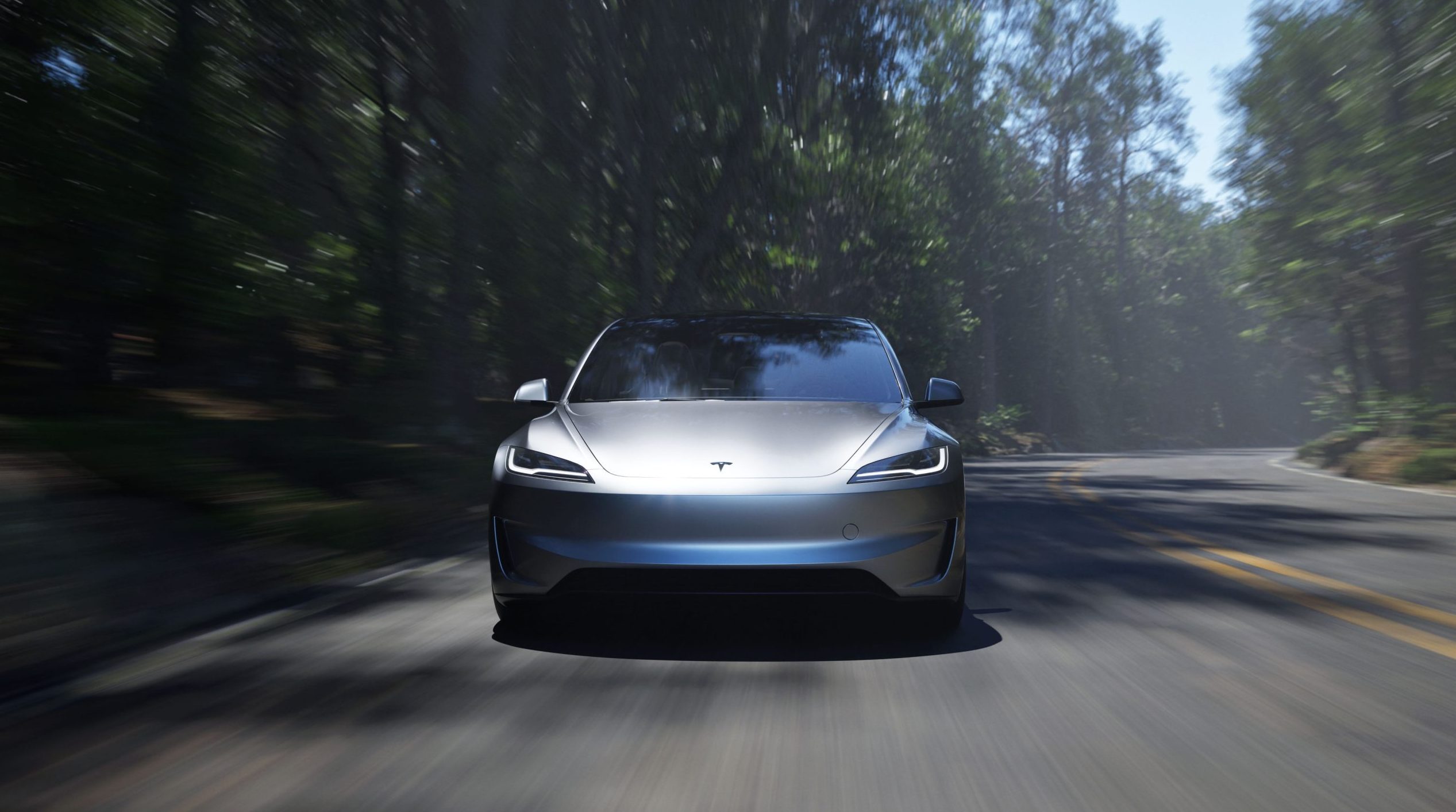
Tesla has launched fresh incentives for the Model 3 sedan, coming as the automaker aims to ramp up deliveries as part of its end-of-quarter push.
With just a few weeks left in the first quarter of year, Tesla is now offering three separate incentives for all Model 3 trims in the U.S., including zero-percent APR financing, $0 due at signing, and 60-month terms. The promos were announced on social media and they’re currently also detailed on the company’s order configurator for the electric vehicle (EV).
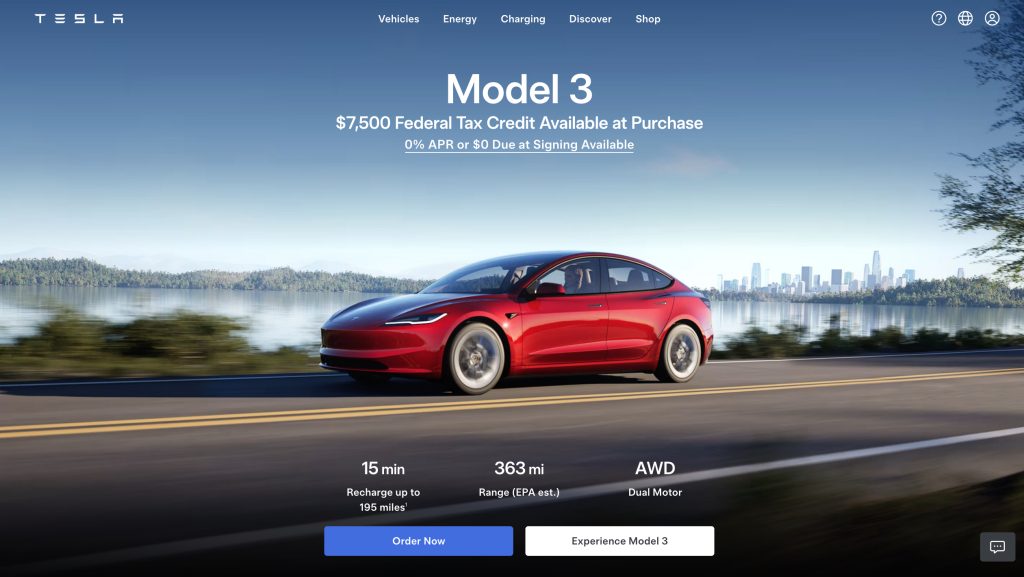
Credit: Tesla
Tesla North America announces a new set of incentives for the reengineered Model 3 sedan.🇺🇸
✅0% APR for all Model 3 trims
✅$0 due at signing
✅60 month termsNot bad at all for one of the best bang-for-the-buck vehicles, electric or otherwise, in the market today. pic.twitter.com/3vM7Ioo2lV
— TESLARATI (@Teslarati) March 4, 2025
To qualify for the zero-percent APR deal in the U.S., buyers must put a down payment of at least 15 percent down, though Tesla also says the federal tax credit can go toward this if eligible. The $0 due at signing deal comes at a 0.99 percent APR with the use of the tax credit, and both of the deals come with 60-month terms.
At the time of writing, the $7,500 federal tax credit is also still available for all three Model 3 trims, amidst some speculation around whether or not the Trump administration could do away with the government incentive. Tesla’s website does not currently show the incentive on the order configurator in Canada, though the company is still offering a 0.99-percent APR deal on orders placed before March 7. On the Mexico order configurator, neither of these promotions are currently available.
It’s common for Tesla to push additional promos at the end of each quarter, and especially at the end of the year, to try to boost delivery numbers that will be included with quarterly data. The news also comes after Tesla began deliveries of the Model Y refresh in the U.S. earlier this week, after first deliveries of the Gigafactory Shanghai-built SUV started going out last week.
Tesla originally launched the refreshed Model 3 last January, a few months after the redesigned sedan became available in the Asia-Pacific and Europe-Middle East markets. Not unlike the recently launched Model Y, the Model 3 “Highland” came with a number of interior and exterior upgrades in two configurations, before Tesla launched the highly-anticipated Performance trim in May.
News
Tesla China wholesale figures drop in February amid new Model Y transition
Tesla China’s February 2025 wholesale figures come amidst the company’s transition to the new Model Y, an update to its strongest seller in the country.
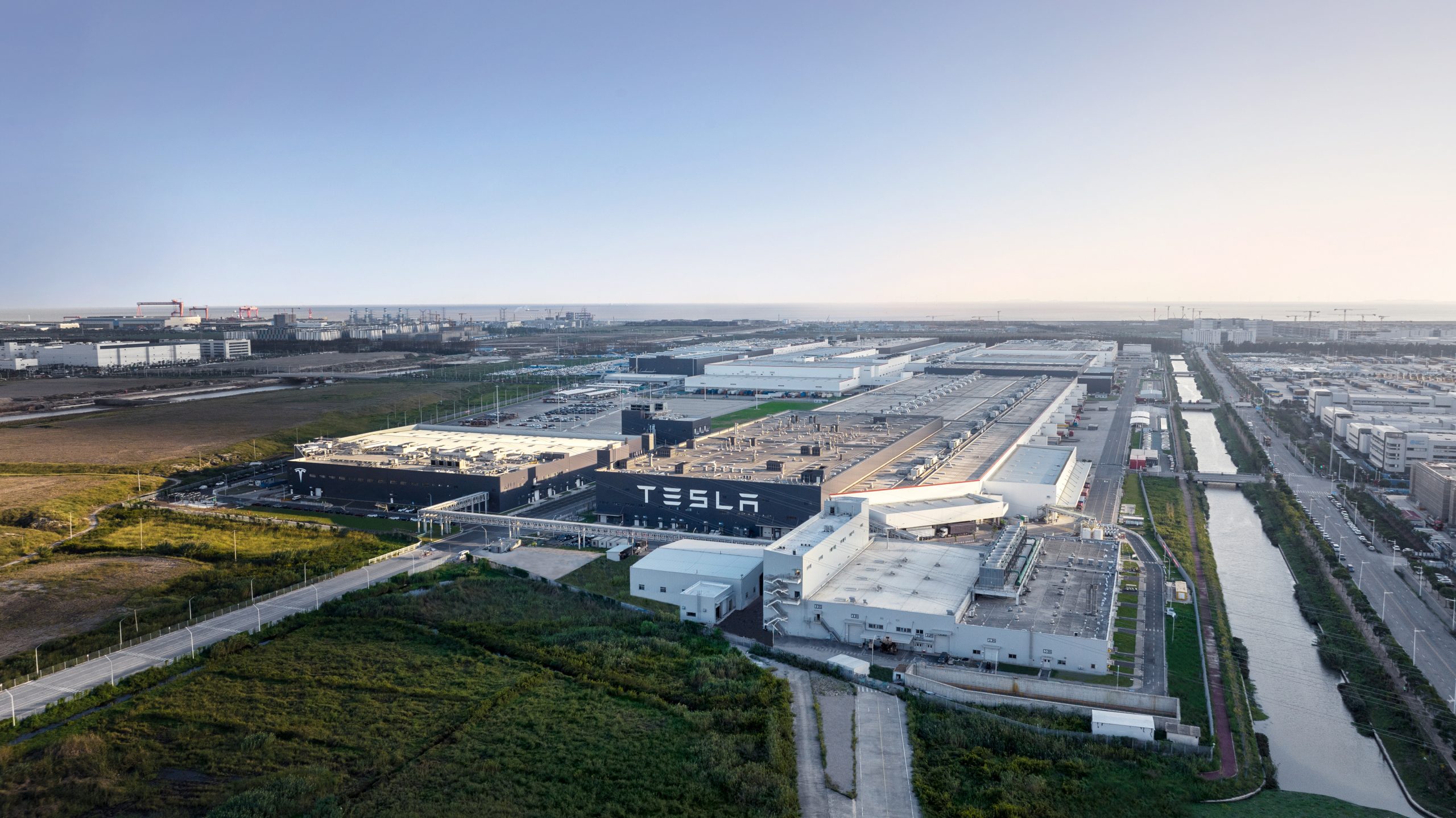
Tesla’s sales of China-made electric vehicles dropped sharply in February, with the U.S. automaker selling 30,688 units wholesale, a 51.47% decline from January’s 63,238 and a 49.16% slide from the 60,365 vehicles that were sold wholesale in February 2024.
Tesla China’s February 2025 results were reflected in data from the China Passenger Car Association (CPCA).
Tesla China’s 2025 sales:
Tesla China’s February 2025 wholesale figures come amidst the company’s transition to the new Model Y, an update to its strongest seller in the country. In the lead-up to the first deliveries of the new Model Y in late February, Tesla China likely cleared out its inventory of Model Y classic units, throttling sales of the all-electric crossover during the month.
Combined January-February 2025 sales for Tesla China currently stand at 93,926 units wholesale, as per a CNEV Post report. These represent a 28.74% decline from the 131,812 units sold wholesale in 2024’s first two months.
The new Model Y:
Tesla China introduced the new Model Y on January 10. At the time, Tesla China listed the revamped all-electric crossover’s first deliveries as sometime in March 2025. Deliveries of the new Model Y ultimately started on February 26, 2025.
The new Tesla Model Y offers a number of improvements compared to its predecessor, from an updated exterior that gives the vehicle a more aggressive look to an interior that addresses most of the complaints about the Model Y classic’s cabin. Upgrades include an updated suspension system and better sound isolation, which improve the new Model Y’s ride quality.
Previous reports:
A previous report from Bloomberg News back in January claimed that Tesla China will be pausing some of Giga Shanghai’s Model Y lines from January 22 to February 14 to optimize production equipment for the updated all-electric crossover. The publication also claimed that the facility’s Model 3 lines will be paused from January 26 to February 3 as well.
Considering that the Model Y is Tesla’s strongest seller in China, it would be interesting to see just how successful the vehicle will be in the country’s domestic market this year.
-

 Elon Musk1 day ago
Elon Musk1 day agoTesla mulls adding a new feature to fight off vandals as anti-Musk protests increase
-

 News2 days ago
News2 days agoTesla’s lead designer weighs in on plans for these two Model Y colors
-

 News1 day ago
News1 day agoTesla starts Model Y ‘Launch Edition’ deliveries in the U.S.
-

 News4 hours ago
News4 hours agoTesla launches fresh U.S. promotions for the Model 3
-
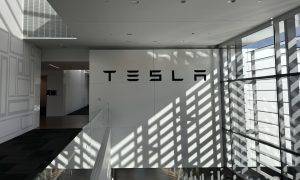
 News2 days ago
News2 days agoTesla design head reflects on over 16 years with the company
-

 News3 days ago
News3 days agoTesla launches 100+ Supercharger partnership with this fast food chain
-

 Elon Musk1 day ago
Elon Musk1 day agoTesla gaining with Republicans as it loses traction with Democrats: Stifel
-

 News1 day ago
News1 day agoAnti Elon Musk protester attacks Polestar after mistaking it for a Tesla




